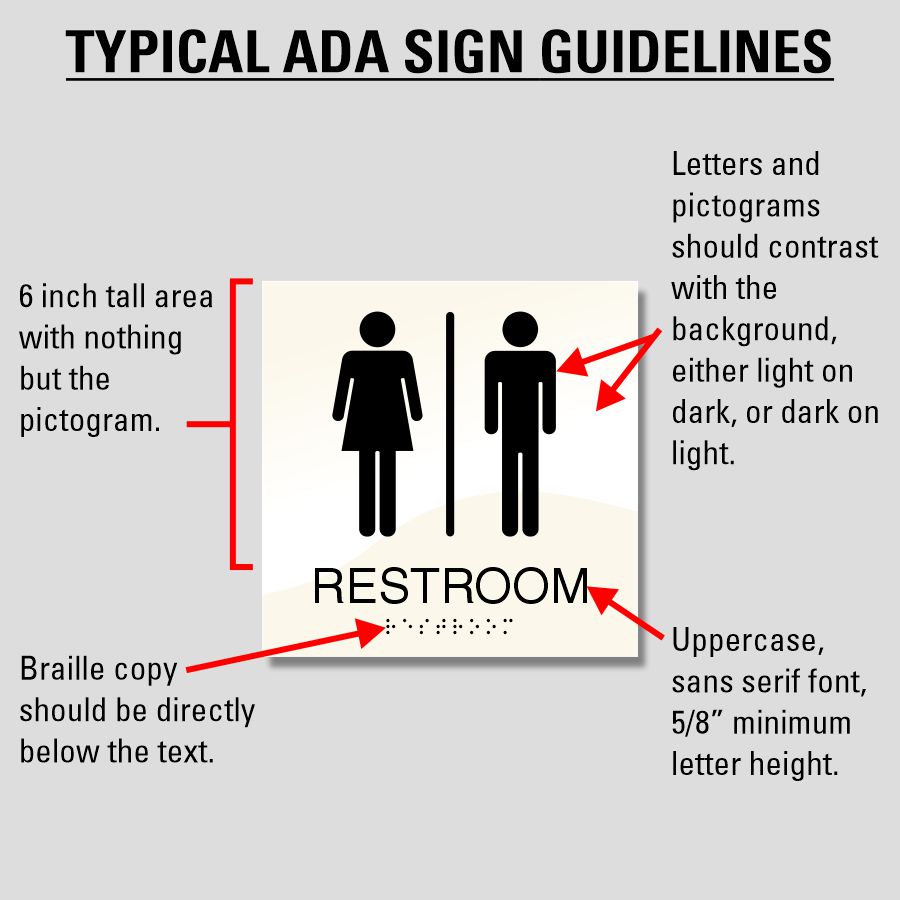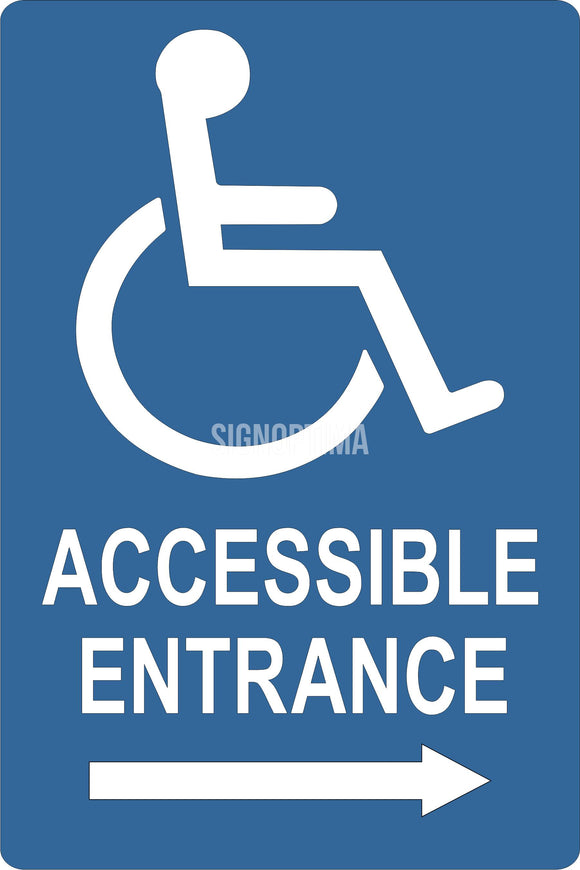Exploring the Key Features of ADA Signs for Boosted Access
In the world of access, ADA indicators work as quiet yet effective allies, making sure that areas are inclusive and navigable for individuals with disabilities. By incorporating Braille and responsive aspects, these signs damage obstacles for the visually damaged, while high-contrast color design and legible typefaces deal with diverse aesthetic requirements. Their critical placement is not approximate however rather a computed effort to facilitate smooth navigation. Yet, past these functions lies a much deeper narrative about the advancement of inclusivity and the recurring commitment to creating fair spaces. What a lot more could these signs symbolize in our pursuit of global accessibility?
Relevance of ADA Compliance
Making sure conformity with the Americans with Disabilities Act (ADA) is important for cultivating inclusivity and equivalent access in public areas and offices. The ADA, established in 1990, mandates that all public facilities, employers, and transportation services fit people with disabilities, ensuring they take pleasure in the very same civil liberties and opportunities as others. Compliance with ADA requirements not just fulfills legal obligations however additionally enhances an organization's track record by showing its dedication to variety and inclusivity.
One of the key facets of ADA conformity is the implementation of obtainable signage. ADA signs are made to make sure that individuals with disabilities can conveniently navigate through structures and areas.
Furthermore, adhering to ADA laws can minimize the danger of legal effects and prospective penalties. Organizations that fall short to follow ADA standards may face fines or claims, which can be both financially challenging and harmful to their public photo. Thus, ADA conformity is essential to cultivating an equitable environment for every person.
Braille and Tactile Components
The consolidation of Braille and tactile elements into ADA signage symbolizes the principles of access and inclusivity. It is typically placed below the matching text on signage to make sure that people can access the details without aesthetic aid.
Tactile aspects extend beyond Braille and consist of raised symbols and characters. These parts are designed to be discernible by touch, allowing individuals to identify room numbers, washrooms, departures, and other essential areas. The ADA sets particular guidelines concerning the dimension, spacing, and positioning of these tactile elements to maximize readability and ensure uniformity throughout different environments.
High-Contrast Color Design
High-contrast color pattern play a critical duty in improving the visibility and readability of ADA signs for individuals with aesthetic problems. These plans are vital as they maximize the distinction in light reflectance between message and background, making sure that signs are conveniently discernible, also from a distance. The Americans with Disabilities Act (ADA) mandates using particular shade contrasts to fit those with minimal vision, making it a critical element of conformity.
The effectiveness of high-contrast colors exists in their ability to stick out in various illumination conditions, consisting of dimly lit settings and areas with glow. Commonly, dark message on a light background or light message on a dark history is utilized to accomplish optimum contrast. Black text on a white or yellow history provides a raw visual distinction that assists in fast recognition and comprehension.

Legible Fonts and Text Size
When taking into consideration the layout of ADA signs, the selection of understandable typefaces and ideal message dimension can not be overstated. The Americans with Disabilities Act (ADA) mandates that fonts must be sans-serif and not italic, oblique, manuscript, extremely ornamental, or of unusual form.
The dimension of the message likewise plays a critical role in accessibility. According to ADA guidelines, the minimal message height ought to be 5/8 inch, and it should boost proportionally with viewing range. This is specifically crucial in public spaces where signage demands to be checked out rapidly and properly. Uniformity in text dimension adds to a natural visual experience, aiding people in navigating settings effectively.
Additionally, spacing in between letters and lines is indispensable to clarity. Ample spacing protects against characters from showing up crowded, enhancing readability. By adhering to these criteria, designers can dramatically enhance accessibility, making sure that signs serves its designated objective for all individuals, no matter their visual abilities.
Reliable Placement Methods
Strategic placement of ADA signage is vital for making best use of ease of access and guaranteeing compliance with legal standards. ADA guidelines state that signs ought to be mounted at a height in between 48 to 60 inches from the description ground to guarantee they are within the line of view for both standing and seated individuals.
In addition, indicators should be placed beside the lock side of doors to enable easy identification prior to entry. This positioning helps people situate spaces and spaces without blockage. In situations where there is no door, signs should be positioned on the closest adjacent wall surface. Uniformity in sign positioning throughout a facility enhances predictability, lowering complication and enhancing overall user experience.

Verdict
ADA indications play a crucial function in promoting ease of access by integrating functions that attend to the demands of people with specials needs. These components jointly cultivate a comprehensive atmosphere, highlighting the value of ADA conformity in important site making sure equivalent gain access to for all.
In the realm of ease of access, ADA indications serve as silent yet effective allies, making certain that spaces are inclusive and navigable for people with impairments. The ADA, enacted in 1990, mandates that all public centers, companies, and transport services accommodate people with specials needs, ensuring they enjoy the very same civil liberties and chances as others. ADA Signs. ADA signs are made to make sure that individuals with disabilities can conveniently navigate through rooms and structures. ADA guidelines specify that signs should be placed at a height in between 48 to 60 inches from the ground to ensure they are within the line of view for both standing and seated individuals.ADA indicators play a crucial role in advertising availability by integrating attributes that attend to the requirements of people with impairments
Comments on “The Duty of ADA Signs in Following Accessibility Standards”